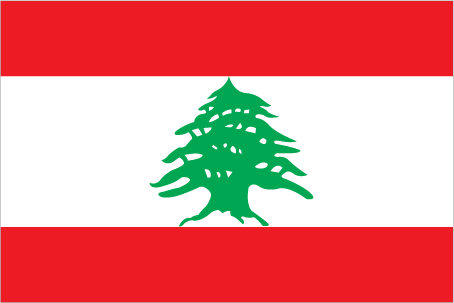To help inspire or plan your trip to Lebanon, some of its major attractions
for travellers are shown below, including some of the best natural, historical, cultural and adventure sites in the country.
These include all of UNESCO World Heritage Sites for Lebanon which represent the best
of the world's cultural and natural heritage.
Click on the icons below to focus on specific types of features
(click again to return to all).
|
|
|
|
|
|
|
|
|
|
|
|
 |
|---|---|---|---|---|---|---|---|---|---|---|---|
| Natural | History | Wildlife | Trekking | Cities | Religious Monument | Boat Journey | Rail Journey | Diving | Cultural | Adrenaline | UNESCO WHS |
UNESCO World Heritage Sites in Lebanon
| Anjar | |
|---|---|
The city of Anjar was founded by the Ummayads in the early 8th century, built on a site with Greek, Roman and early Christian buildings. The city incorporated the symmetrical Roman layout and had two palaces, baths a mosque and numerous shops. It flourished for only a short period before the Ummayads were defeated by the Abbasids. The ruins were rediscovered in 1949. UNESCO World Heritage Site: Anjar | |
| Baalbek | |
|---|---|
Baalbek was a Phoenician city before the arrival of the Romans, known as Heliopolis, the city of the sun, as the Phoenicians worshipped the sun god Baal here. The Romans arrived in 64 BC and began construction of huge temples to their gods Bacchus, Jupiter and Venus in addition to the Great Court of Baalbek, constructed in the 2nd century AD. UNESCO World Heritage Site: Baalbek | |
| Byblos | |
|---|---|
Byblos is one of the oldest continuously inhabited cities in the world, stretching back to Neolithic times and was one of the oldest Phoenician cities. The world's first alphabetic script was developed here and the town's name, derived from 'biblos' or sheets of paper, gives its name to the Bible. Occupied and influenced by numerous civilisations over millennia, the ruins at Byblos include Egyptian temples, the Phoenician acropolis and the Crusader castle. UNESCO World Heritage Site: Byblos | |
| Cedar Tree Reserves | |
|---|---|
The cedar tree is the national emblem of Lebanon and the great cedar forests have been used throughout its history in the construction of religious and political buildings. Today, the remaining cedar forests can be seen at a number of sites including Bcharre and the Tannourine Cedar Reserve in the north, which have trees up to 1,500 years old. UNESCO World Heritage Site: Ouadi Qadisha (the Holy Valley) and the Forest of the Cedars of God (Horsh Arz el-Rab) | |
| Qadisha Valley | |
|---|---|
The Qadisha Valley in northern Lebanon contains important early Christian monastic settlements, particularly of the Maronite sect. Located in dramatic settings on the Qadisha slopes and built into cliff faces, many of these monasteries and chapels are still in use and the Maronite services are conducted in Syriac, a language closely related to the Biblical Aramaic. UNESCO World Heritage Site: Ouadi Qadisha (the Holy Valley) and the Forest of the Cedars of God (Horsh Arz el-Rab) | |
| Tyre | |
|---|---|
The city of Tyre, located in southern Lebanon near the border with Israel, was one of the great Phoenician cities and one of the oldest metropolises in the world. Its ruins include remnants of the many periods in its history, particularly as a Roman city and Crusader stronghold. It was almost totally destroyed by the Mamelukes in the 13th century. UNESCO World Heritage Site: Tyre | |


